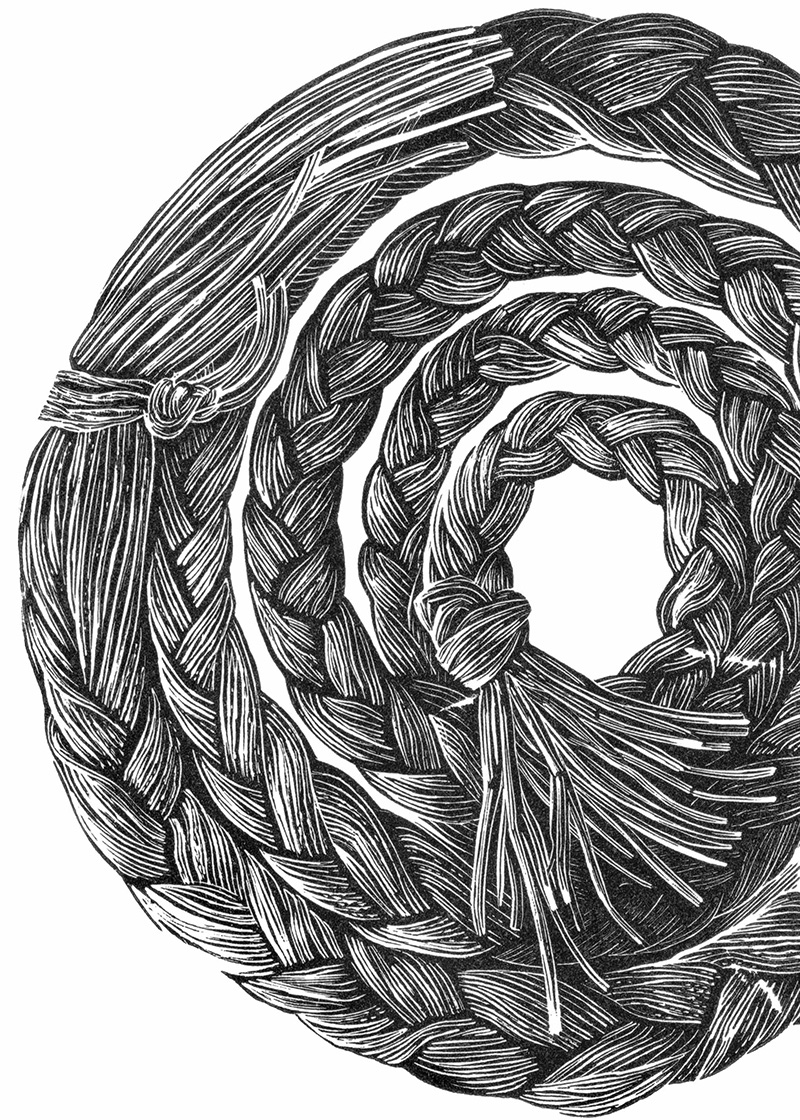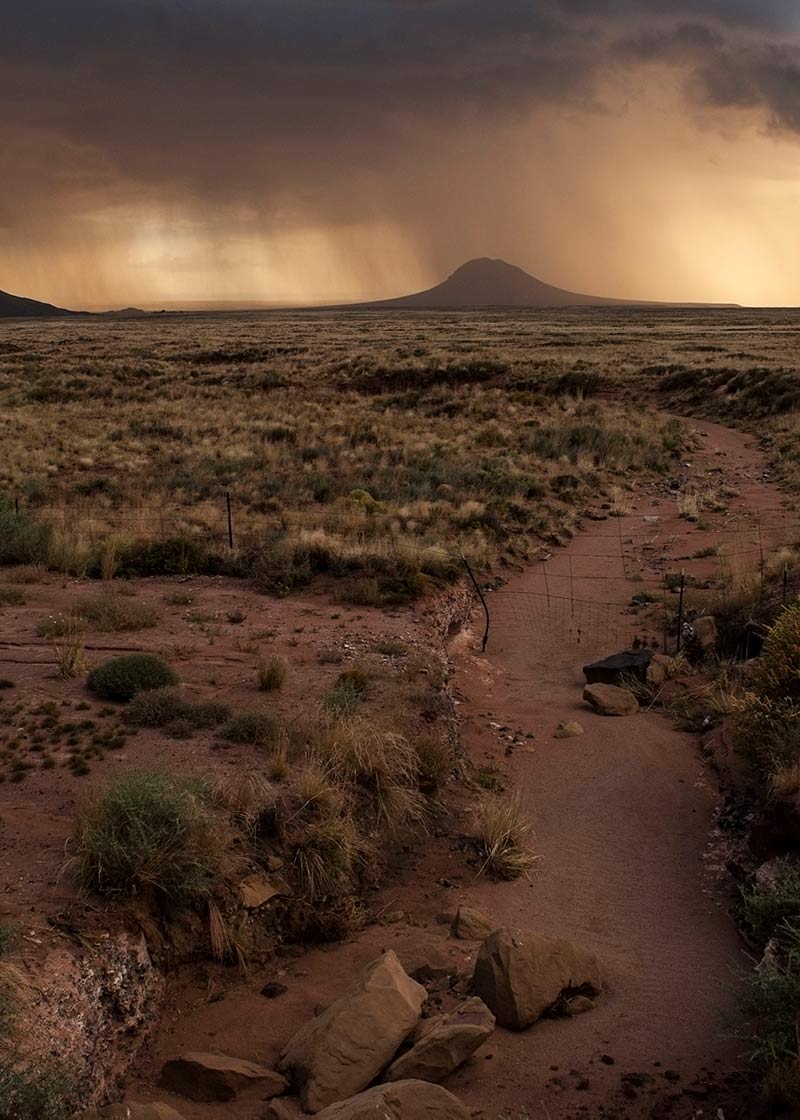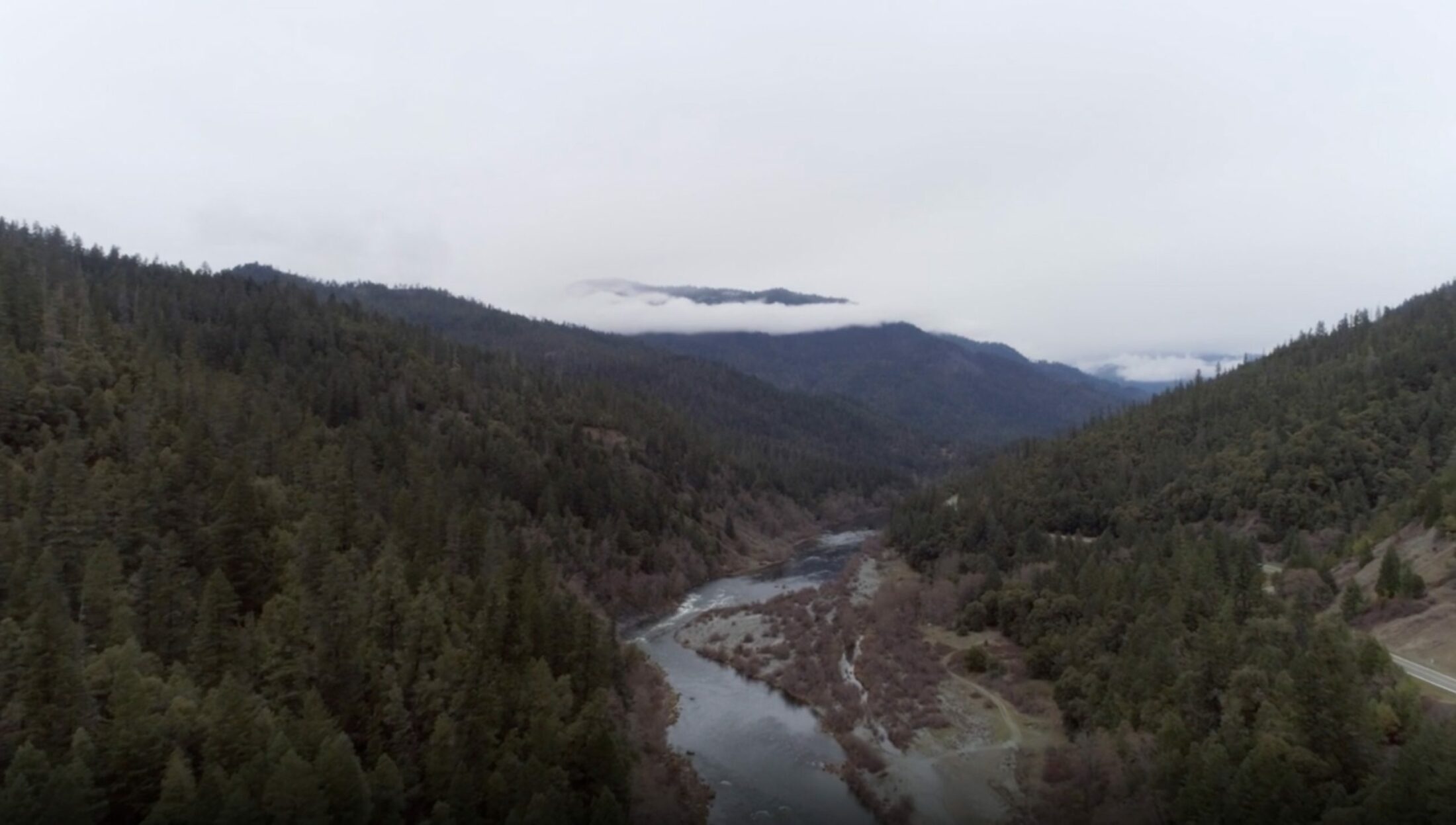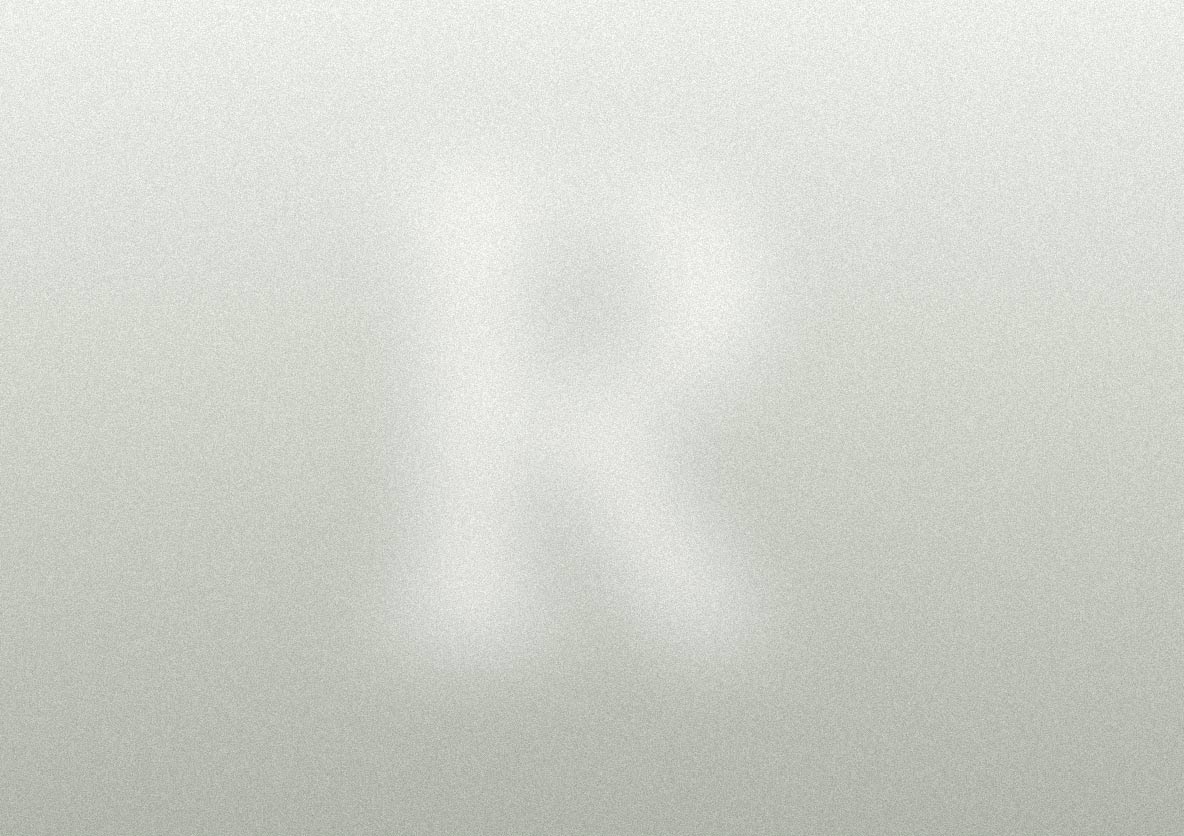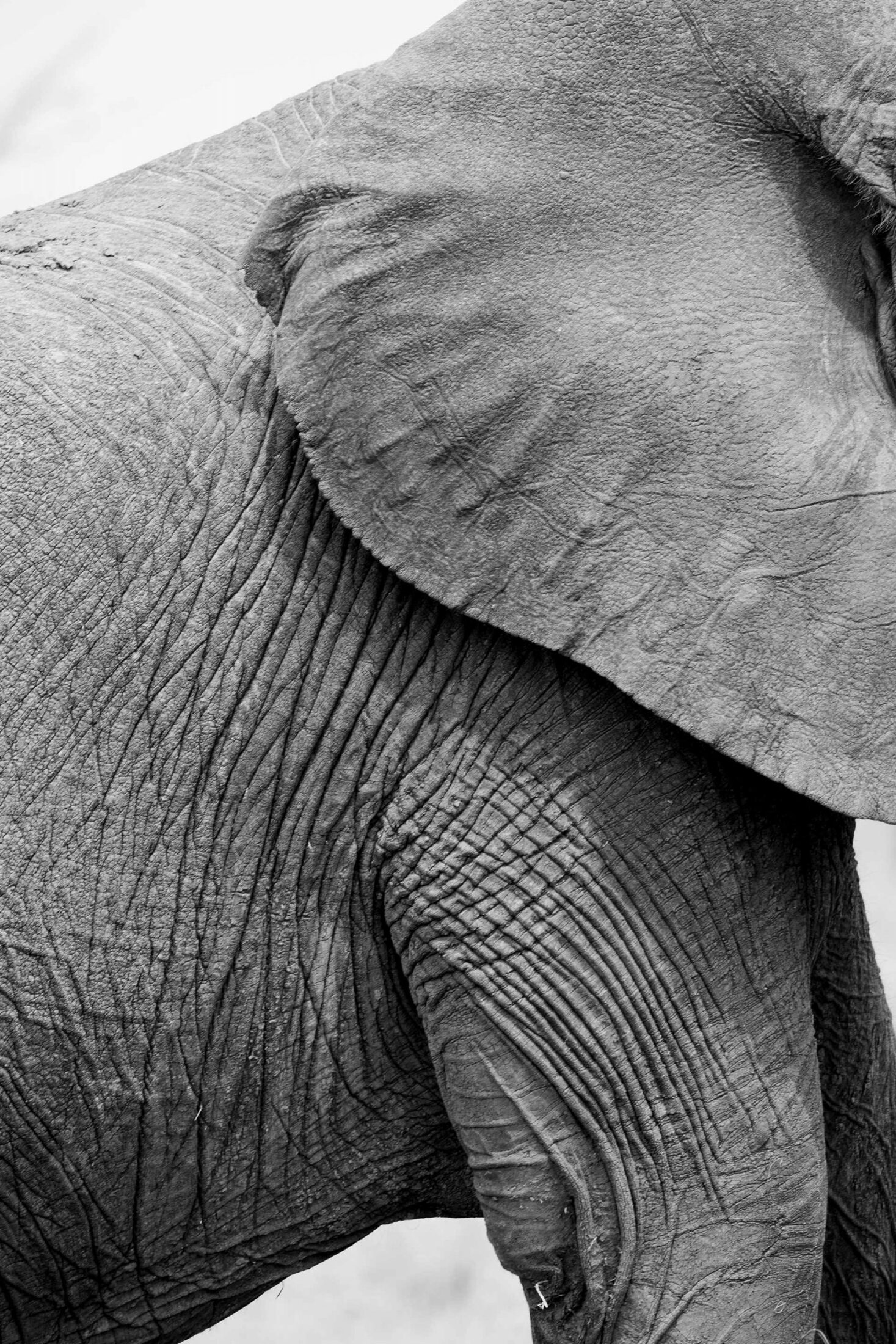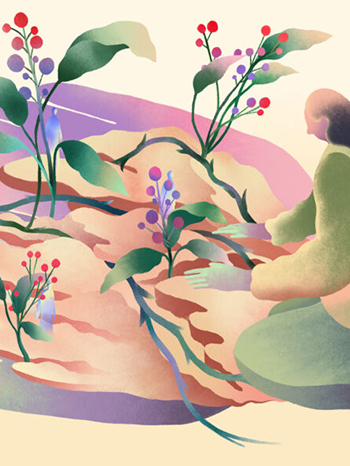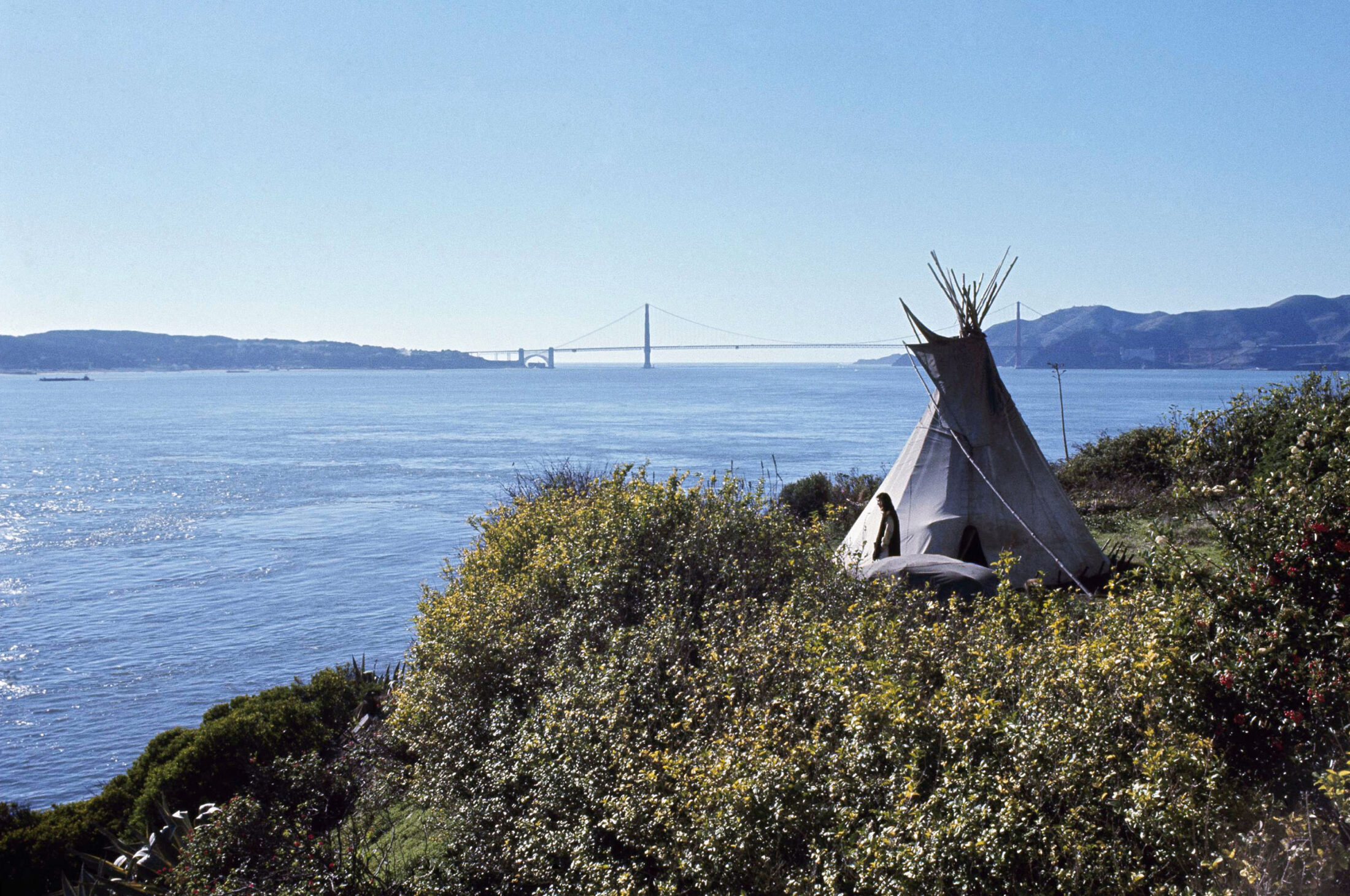
In November 1970, American Indian Movement activist John Trudell looks out over the San Francisco Bay during the Native American occupation of Alcatraz Island.
(AP Photo/File)
How Indigenous Peoples Are Fighting the Apocalypse
by Julian Brave NoiseCat
Julian Brave NoiseCat (Secwepemc/St’at’imc) is a fellow of New America and the Type Media Center, a columnist for Canada’s National Observer, and a contributing editor for Canadian Geographic. His work has appeared in print and online in many publications, including The New York Times, The Washington Post, and The New Yorker. He is currently working on a book, tentatively titled We Survived the Night, and also co-directing a documentary on the search for unmarked graves at the residential school his family was sent to in Williams Lake, British Columbia.
In this op-ed, Julian Brave NoiseCat reflects on the convergence of two apocalypses—the genocide of colonization and the ecocide of climate change—as he traces a long history of Indigenous collective identity and invites us to remember our wider human and nonhuman family.
Weyt-kp xwexwéytep.
Julian Brave NoiseCat ren skwekwst. Ren kiké7ce te skwest re Alexandra Roddy ell ren qeqe7tsé te skwest re Ed Archie NoiseCat. Secwecwpemc-ken ell St’itlimx-ken. Te Tsq’escen re tst7ekwen. Te Oakland re tst7ekwen. Pyin te sitq’t lexexyem-ken te necwepepl’qs re qelmucwúy ell re tmícw.
It is appropriate to start in my language, Secwepemctsín, which I learned from my kyé7e (pronounced “kya-ah”), my grandmother. She’s the oldest person on the Canim Lake Indian Reserve in what today is known as British Columbia, and one of our last remaining fluent speakers. When she was a little girl, a government official called an “Indian agent” took her and a bunch of other kids from Canim Lake away from their families on the back of a cattle truck to an Indian residential school called St. Joseph’s Mission. There, they were brutalized for speaking their language and taught to hate themselves for being Indian.
Earlier this year, 215 unmarked graves of Native children, some as young as three, were discovered at the site of the Kamloops Indian Residential School, where my kyé7e earned her nursing degree. Not long after, 182 hidden burials were identified at a residential school in Cranbrook, British Columbia. Then 751 in Marieval, Saskatchewan; 160 in Penelakut, British Columbia.
Across the continent, First Peoples are now searching for the bones of our young ones at the schools that were meant to civilize us. Over the last four months—during early stages of research and writing for a book and a documentary—I’ve been journeying back to St. Joseph’s Mission in my people’s homelands, where they’re using ground-penetrating radar to find my kyé7e’s friends, cousins, and classmates who never came home.
When I was there in August, I interviewed a former kukpí7, or chief. He had never publicly spoken about the residential school or his origins, but on camera he told me he was the illegitimate child of the priest at the school, the product of kidnap and rape. Even though he was the child of a white father, he was still taken to a residential school with all the other Native kids, and like all the other Native kids, he was abused. “When I was there, we all were,” he told me.
After he shared his story, which ran more than three hours, I stepped out of his front door on the Sugarcane Indian Reserve. Ash was falling from the sky. Massive wildfires were burning in Western Canada and the western United States. But really, the whole world seemed ablaze.
This summer, the northwestern part of North America was gripped by a heat dome that set all-time temperature records from Portland, Oregon, to Fort Smith in the Northwest Territories. By mid-August, heat, wind, lightning, and humans had sparked over 1,500 wildfires in British Columbia. One small town, Lytton, where I have friends and relations, burned completely to the ground. It’s now little more than a grid of concrete foundations and scorched chimneys.
The province of British Columbia, like many other jurisdictions, declared a state of emergency.
I’m thinking through the convergence of these apocalypses: the genocide of colonization and the ecocide of climate change. I’m trying to understand how Indigenous Peoples have persisted in the face of existential threats, because I believe that our survival ought to matter to more people than just ourselves. That it ought to matter to you.
I chose to begin in my language because I want to show you that in our words, and in our very being, Indigenous Peoples are refusing to be annihilated.
In Secwepemctsín I began by sharing who I am in relation to my kin, to my community, and to the places I come from, because those things matter—not just to Indians, but to all people. At this dire juncture, with a pandemic engulfing humanity, and the concentration of carbon dioxide in the atmosphere climbing to levels not seen in 3.6 million years, we all need to remember who we are, how we are related, where we come from, and how the other-than-human world, to which we are also related, gives us life.
Allow me to demonstrate.
When I introduced myself, I said my name is Julian Brave NoiseCat. And that meant something. Because NoiseCat—or Newísket (“Ne-wees-ket”), as the name was originally pronounced before the missionaries messed it up—nearly died out. At St. Joseph’s, the missionaries baptized us with Christian names. Before then, our people carried ancestral names and earned names—what you might know as Indian names. And we could take on many in a lifetime.
But as they were taking control of our lands, the government of Canada and the Church said that this would not do. Us Indians could not be plural, we could only be individuals. They said, “You Indians need one name so we can keep track of you, so we can confine you on reservations, count your dwindling numbers, and mark our control of your lives.” They gave us names from their faith so they could save us from our supposed savagery. When stealing and destroying are called “civilizing” and “enlightening,” these acts can be justified.
In fact, they were so good at taking away names that, when she died, my great-grandmother Alice NoiseCat was the last person to carry her name.
Alice raised my father when his own parents, who were still dealing with the traumas of the residential school, could not. She was a hard worker. Dad remembers her towing him out on the family trapline in a sled made from an old car hood. They’d check all the traps, pulling frozen beaver and muskrats out of the water so they could sell their fur and feed their family. They didn’t have much, and hunger was common. But Alice was generous. One time, she found a fresh apple, a hard thing to come by on the rez—even today—and she saved it for my dad because she knew he loved them.
And then one night, in 1966, she went out looking for her husband, Jacob, who was out drinking in a blizzard, and she froze to death.
After Alice was gone, there were no NoiseCats in the world until my father married, reclaimed her name, and passed it on to me.
The next thing I did when I introduced myself in my language was put myself in relation to my family and my people, because it’s important to remember that we are not alone, that we have relatives, that we are, in fact, all related—and not just us humans. The other-than-human world shares some of our DNA too. If we remember that, maybe we will recognize that our fates are also interrelated.
For the last five years, my father and I have participated in the Tribal Canoe Journey. It’s an annual Indigenous gathering on the West Coast, where tribal people organized into what are called “canoe families” get into their ocean-going vessels and paddle for days, even weeks, across the seas. At the end of those voyages, we converge on a single community for a weeklong celebration of food, gifts, speeches, dances, and songs.
My father wasn’t around for most of my childhood. He was struggling with alcoholism and the demons inherited from St. Joseph’s and the cycles of poverty, dysfunction, and abuse it unleashed on Canim Lake. But the canoe journeys have brought us back together, and they helped us recognize the importance of family. You see, the beautiful thing about the canoe is that it quickly teaches you that if you want to go anywhere, you need other people, you need a family, you need to go together. In the canoe, you remember that the power of identity is not individual, it’s plural, it’s collective, it’s dynamic.
Pulling alongside dozens of members of canoe families that welcomed us into their vessels with open arms, my father and I have traveled across international borders and hundreds of miles of ocean. We’ve made countless friends, learned dozens of new songs, and visited many magical places. We’ve been inspired.
And in 2019, we were inspired to bring the canoe journey to Alcatraz Island. That year marked the fiftieth anniversary of the Alcatraz Occupation, a nineteenth-month protest for Indigenous self-determination, sovereignty, and treaty rights.
Few understand how important the Alcatraz Occupation was to Indigenous Peoples. It’s like our version of the Montgomery Bus Boycott. It launched a social movement that changed the hearts and minds of Native and non-Native people across the country and around the world. Alcatraz made Indians proud to be Indian again, and it transformed federal policy.
During the Occupation, President Nixon shifted the federal government’s policy from an officially stated goal of “termination” to one of self-determination.
Working with our own canoe family, which we called the “Occupied Canoe Family,” my mother, father, and group of friends that included a youth worker and an Alcatraz Occupation veteran organized a paddle around Alcatraz Island on Indigenous Peoples’ Day in 2019. Eighteen canoes, including some from as far north as Canada, participated. Dozens of media outlets covered the story. A local TV station broadcast the canoes circumnavigating the island from its traffic helicopter. Our little all-volunteer effort even made it into The New York Times. And for a day, Alcatraz was not seen as the former federal prison, but instead as a symbol of Indigenous freedom, the way Native Peoples see it.
We can do a lot together when we recognize the fact that we need relatives, that we need family.

Photo by Julian Brave NoiseCat
Every time my father and I got out into the water, we rekindled and deepened our connection to the lands and waters that gave us our Salish culture.
When I introduced myself in my language, I said where I come from: Canim Lake, called Tsq’escen in our language, and Oakland, the town by the Bay that raised me. Because if we don’t stop to remember and honor the places we come from and rely upon, how can we possibly defend them?
Earlier this year, I was asked to write an essay for the Paris Review celebrating the Kiowa author N. Scott Momaday, who was the first Native American to win the Pulitzer Prize for Fiction. While reporting that piece, I discovered that Momaday actually taught one of the original student leaders of the Alcatraz Occupation. Her name was LaNada War Jack, and in 1968, she became the first Native American student at UC Berkeley.
Now, although Momaday never got involved with the Alcatraz Occupation or the Native Rights movement, War Jack told me that his lectures influenced her profoundly. So in my reading, reporting, and writing, I set out to understand the ethic at the core of his work, the worldview it grew out of, and the movements it continues to influence. Rereading his books, I noted a brief postscript in my 2010 edition of the Pulitzer Prize–winning House Made of Dawn. It read: “Both consciously and subconsciously, my writing has been deeply informed by the land with a sense of place. In some important way, place determines who and what we are.”
I am Tsq’escenemc, a person from Canim Lake, a place we call Broken Rock in our language, but I am also a son of Oakland. My connection to those places and others is an imperative. It demands that I remember, honor, and protect those patches of Earth. When I introduce myself to you in my language, it is an invitation into dialogue and relation. And now that we are in dialogue and relation through this text, I believe that you, too, are called to honor and protect those patches of Earth and the patches of Earth that you call home.
You might be thinking that I sound exceptionally proud of being Indian, and I am certainly guilty of that. But this is not mere identity politics.
What I’m saying, what I’m thinking through in the book I’m writing and the film I’m making, is that a broader humanity facing the apocalypse of climate change might have a thing or two to learn from a people who’ve lived through the near total loss of our own worlds; that Indigenous Peoples have something important to say if you’re willing to give us an audience, as you are giving me now; that there might even be ways that our humanity and our collective future can be brightened if you have it in your heart to believe that the civilizing mission was wrong, that the St. Joseph’s Missions of the world had it all backwards, that in fact, in the long run, maybe America, Canada, and the so-called civilized world should become just a little bit more Indigenous, rather than the other way around.
The United Nations says that climate change is nothing less than “code red for humanity.” It is already brutalizing many of the places we come from and rely upon. It is driving us apart, making us forget that we are not just interconnected but interrelated. We are all kin. And if we’re not careful, climate change is going to make us forget who we are—animals of remarkable intellect, capable of immense care and compassion, even when grave injustice has laid us low.
So my message to you is simple: Remember who you are. Remember that you have many relatives, human and nonhuman. And remember that we all come from somewhere, and that those places, and the place called Earth, need us to fight for them.
Tsukw ell kukwstetsemc.
Adapted from a speech given at the 2021 Bioneers Conference.
